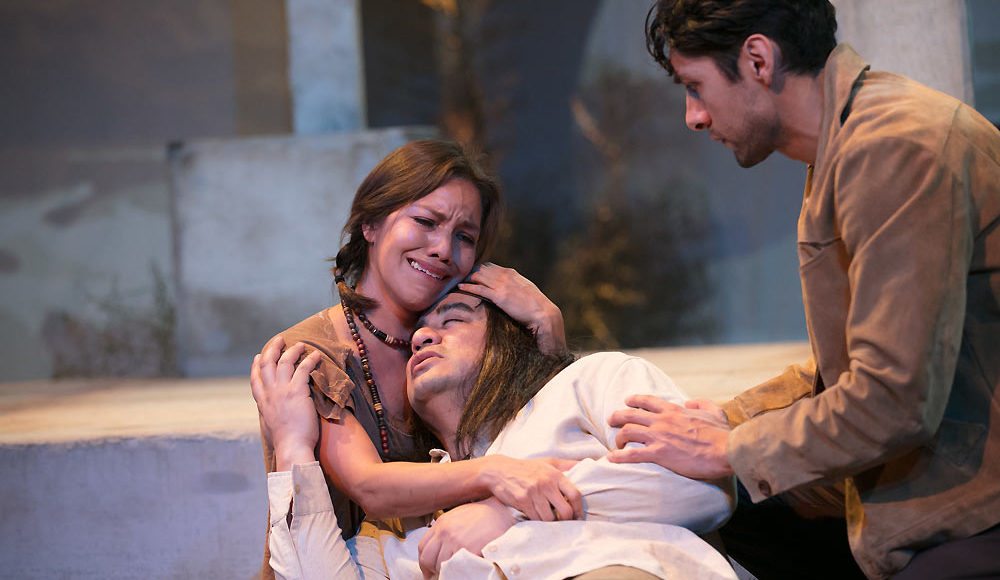A good many people see Los Angeles as a land without the gravitas of history.
Oh, it is true, that L.A. has a sadly problematic relationship with its past.
As I’ll explain to anyone willing to listen, or unwilling for that matter, L.A. is the “anti-city.”
Whatever is true in any other city is not true about L.A.
Case in point: our history.
Any other city exploits and capitalizes on its history. L.A. hides its history.
Nature of the beast; people come to L.A. to escape, to flee, to deny their past. They don’t want “history,” they want the future.
So, the Jane House has been shoved to the rear of Hollywood Boulevard, MGM, the Garden of Allah, the Brown Derby were all annihilated by short-sighted corporate greed, and in the face of massive protests Pia Zadora tore down Pickfair and beneath the sands of the Guadalupe-Nipomo Dunes, Cecil B. De Mille buried the set for his silent version of The Ten Commandments.
But look closely at any portion of Los Angeles; what you’ll find is history a-plenty. Take the intersection of Wilshire and Fairfax, for example. I could tell you a couple dozen facts about that junction, but as we have a play to review, I’ll only mention two.
First that Wilshire is the oldest continually used pathway in this country. It has been traveled over for at least nine thousand years, with the Chumash people settling in the region circa 8,000 BCE.
And second, that crossroad in 1920 was the location of one of L.A.’s first airports; Rogers Airfield. It was here that a young Amelia Earhart took her first flying lessons.
You see…? History.
Playwright Evangeline Ordaz, in This Land, has taken a parcel of earth, now part of a residential street in Watts, and structured a breathtakingly ambitious history of this city and its people that stretches over a century and a half.
An episodic story in the vein of Tales of Manhattan or The Solid Gold Cadillac, only with real estate as the binding device for the assorted stories.

(l-r) LeShay Tomlinson, Johanna McKay, Niketa Calame, Ian Alda in ‘This Land’ (Image by Grettel Cortes – Courtesy of Co of Angels)
Ordaz stirs her periods vigorously; beginning with a realtor trying to buy a residence for redevelopment in a Watts of 2020, then whirling her audience to 1843 and a forbidden romance between the son of a wealthy Rancho owner and the daughter of a Tongva Indian elder.
She then takes us through various periods such as the Mexican-American War and The King Riots; highlighting along the way the shifting complexion of the community, looping and shifting backwards and forwards, showing the connections between the people and the families over the years.
The piece would benefit from some adroitly applied trimming.
One must keep on their toes to follow some of the linage towards the end, and both the audience and the characters need to spend more time with one another to develop deeper ties.
The cast of This Land, Jeff Torres, Ian Alda, Le Shay Toimlinson and Niketa Calame, Cheryl Umaña, and Richard Azurdia take on two or three roles each, with Johanna Mc Kay carrying only one.
It is a solidly talented cast top to bottom: Mc Kay as the former Okie and last white resident of Watts, Azurdia as Toya an Indian maiden fighting to save her people from the Mission Priests and Umaña as Fidel, a Mexican immigrant caught up in the madness following the Rodney King verdict have the strongest moments because the playwright has allowed the actor more stage time in which to construct them.
Armando Molina fills the role of director with skill and vigor in keeping the action moving well and cleanly. Justin Huen’s set and lighting design in partnership with Rebecca Kessin’s sound score and Benjamin Durham’s video design delineate the shifting periods with panache.
Ordaz has attempted to create a sweeping Michener-like saga to tell the story of Los Angeles, in revealing our varied paths and shared history. While perhaps not totally successful in this, both her passion and her commitment to the work and this city assures the evening will entertain and enlighten her audiences, closing with the much-needed revelation that regardless of our many differences, all who live in this wondrous city of ours are family in the eyes of the angels.
** Featured Image: (l-r) Cheryl Umaña , Richard Azurdia , Jeff Torres (Image by Grettel Cortes – Courtesy of Co of Angels)
♦ ♦ ♦
This Land opened on
October 20 and runs through November 12
(see performance dates below)
at
1350 San Pablo Street
Los Angeles, CA 90033
Performance Dates:
- Fridays at 8 p.m.: Oct. 20, 27; Nov. 3, 10
- Saturdays at 8 p.m.: Oct. 21, 28; Nov. 4, 11
- Sundays at 7 p.m.: Oct. 22, 29; Nov. 5, 12
- Mondays at 8 p.m.: Oct. 23, 30; Nov. 6
For Tickets and Additional Information
Go to www.companyofangels.org
Thank you for Supporting the Voices of The TVolution
Like us on Facebook and Please Subscribe in
the box on the left panel





